One of the best things about self-guided walking holidays is that you can really connect with nature. These locations have been specifically selected because they offer great opportunities to see various forms of wildlife. Combine this with breathtaking views and rewarding walking routes and you have a perfect holiday!
1. UK
The biodiversity to be found within the UK is incredible. The islands in particular have unique ecosystems which have a incredible variety of flora and fauna, due to the relatively low human populations and subsequent lack of disruption to the land. The Orkney islands, located in the harsh climate of the North Sea, north of the Scottish mainland, are home to the Orkney vole, the brown hare and the Eurasian otter. Birds species such as puffins, hen harriers and kestrels flourish on the sea cliffs and reserves. Seals, orcas and increasingly basking sharks can be seen in the waters around the islands.

Eurasian otter, Orkney Islands
On Scotland's west coast, islands such as Mull and Iona offer many opportunities for wildlife lovers. There's a chance you'll spot sea eagles and golden eagles. Even on the journey to the islands, such as the ferry crossing from Ardrossan to Arran, you can see beautiful sealife, including porpoises and puffins. 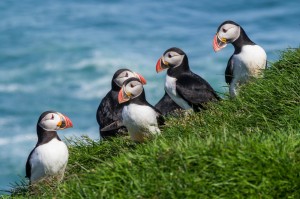
Puffins, Arran
Speyside, on Scotland's north east coast, is home to numerous beautiful animals, including red squirrels, roe deer and pine martins. Bird species in the area include golden eagles and crested tits, and the cold North Sea is playground to minke whales, bottlenose dolphins and harbour seals. Further south, Pembrokeshire is home to colonies of grey seals, and the island of Grassholm which is Europe's largest gannetry. The area in general is a haven for birdwatchers, with razorbills, guillemots and manx shearwaters aplenty. Cornwall is home to a variety of fascinating species, including Risso's dolphins, the occasional minke whale, and birds such as hoopoes and wrynecks.
2. Portugal
The Algarve, Portugal's southernmost region, is known as a popular tourist destination, but the area offers much more than beach resorts and sun-drenched golf courses. A whole world of insects, butterflies and moths hide in the region's rugged interior, along with a myriad of fascinating species of flora. The warm, subtropical climate of Madeira, a Portuguese island off the north west coast of Africa, has a fantastic population of lizards, and offers the opportunity to spot many types of whales and dolphins. Insect lovers will have the chance to see monarch butterflies and dragonflies. 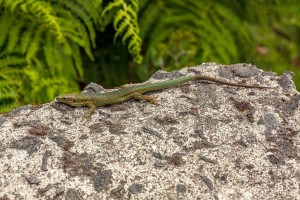
Common wall lizard, Madeira
The lesser-known Azores islands, known as 'the edge of Europe', are an autonomous region of Portugal located in the mid-Atlantic. The unique and largely undisturbed ecosystem is a haven for a variety of birds, insects and plant species. Bats, dolphins and even the occasional turtle or sperm whale can be seen on or around the islands.
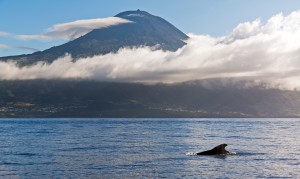
A sperm whale in the Atlantic Ocean with Mount Pico, Azores Islands
3. India
Due to the immense size of the country, India's climate and ecosystems vary greatly from north to south and so it boasts incredible biodiversity. One of its wildlife hotspots is the Ranthambore National Park, which is located in Rajasthan, northern India. This park is home to an endless list of magnificent creatures, including tigers, leopards, hyenas, macaque monkeys and sloth bears. Reptiles thrive in the wetlands of this huge protected area, with opportunities to spot turtles, crocodiles, pythons and vipers. 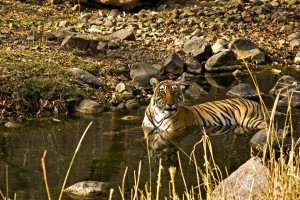
Tiger relaxing in Ranthambore National Park
Open every year from October to May, Ranthambore National Park is a wildlife enthusiast's dream. It offers a fantastic, accessible and ecologically friendly way to observe a magnificent range of animals.

Macaque monkey in Ranthambore National Park
4. Iceland
Iceland is renowned for its magnificent waterfalls, fascinating geographical formations, geysers and glaciers. But what many visitors miss is the plethora of species that flourish in its unique ecosystem. Humpback and minke whales can be spotted off its coasts, while on the land you can see the adorable Artic Fox, whose colour changes from brown in the summer to white in the winter, in order to stay camouflaged. Reindeer can be found on the east of the island.
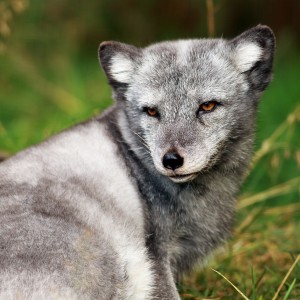
Arctic fox
Located in the North Atlantic between Europe and America, Iceland is home to domestic and vagrant bird populations, which include puffins, Arctic terns, golden plover and common snipes.
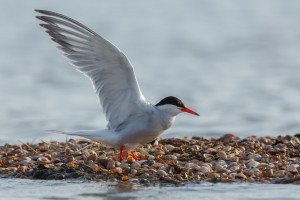
Arctic Tern
5. Patagonia
Patagonia's variety of altitudes mean its wildlife is distinct and diverse. On the mammal side of things, you can spot pumas, foxes, hares, skunks and even armadillos. The region is home to some beautiful and captivating bird species, including the striped woodpecker, the austral parakeet, the austral pygmy owl and the magellanic horned owl. Larger birds such as the lesser rhea and the flamingo can also be seen in this wild region.
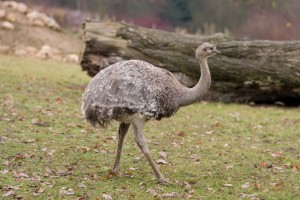
Lesser Rhea in Patagonia
Many species can be spotted in the Torres del Paine national park. Between the magnificent peaks, the guanaco, a close cousin to the llama, can be seen grazing on the grassy tundra. Many species named after the Andes can be found in the Patagonian section of this extensive mountain range, such as the South Andean deer, the Andean grey fox and the mighty Andean condor.
For more information about wildlife on our holidays, get in touch with our resident wildlife expert Dan at info@macsadventure.com.



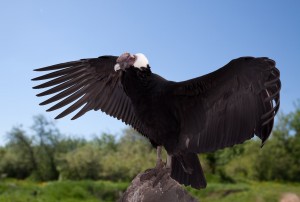

 Australia
Australia New Zealand
New Zealand South Africa
South Africa European Union
European Union